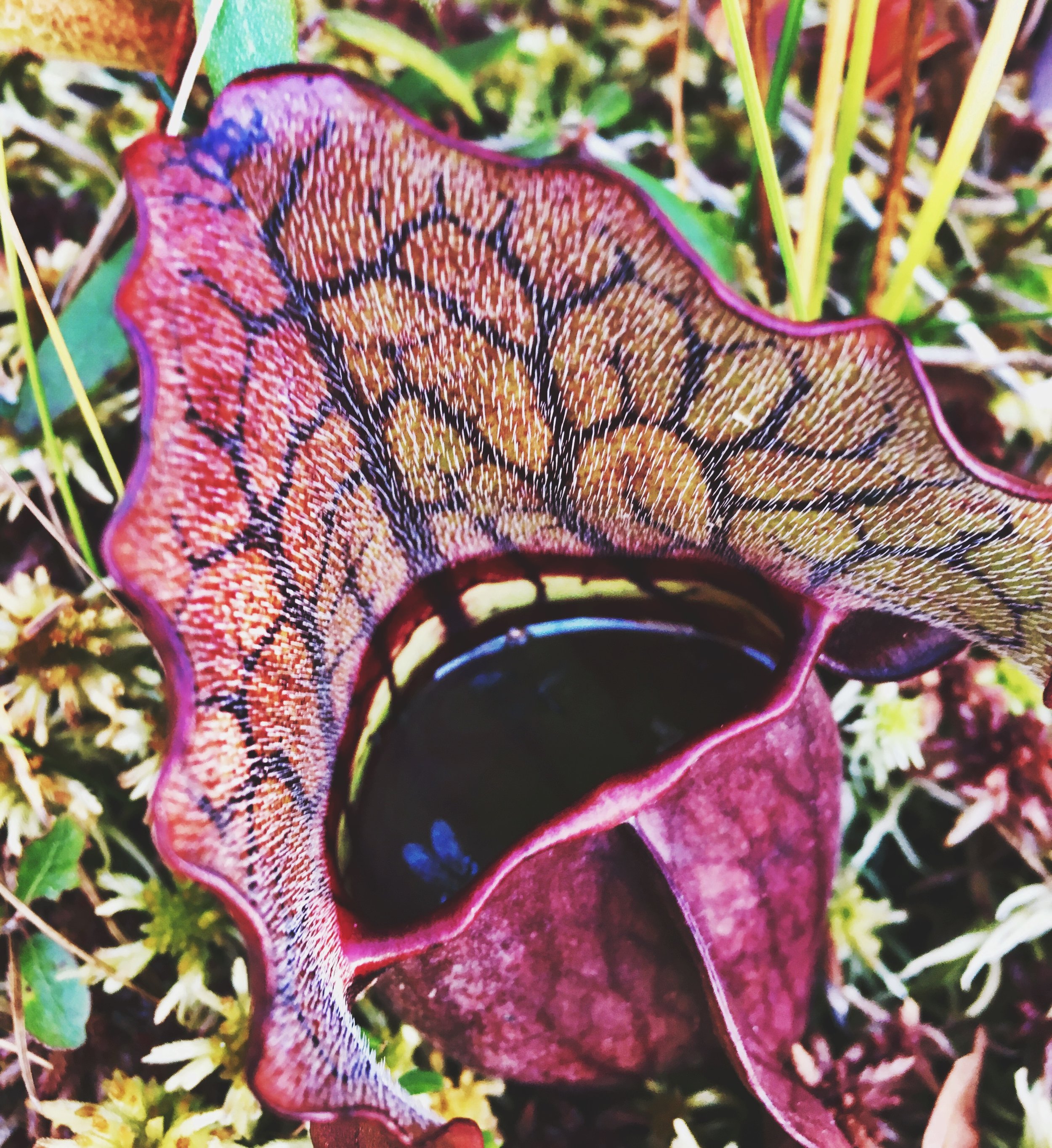A Floating Paradise
bog
/bäɡ,bôɡ/
:wet spongy ground
:a poorly drained usually acid area rich in accumulated plant material, frequently surrounding a body of open water, and having a characteristic flora (as of sedge, heaths, and sphagnum)
It is fall in the northern woods of Minnesota. Tamarack glow amongst their evergreen back drop, Paper Birch begin to lose their leaves and show off their winter specialty, and Lichen covers the surface of every branch and trunk.
Venturing through the bog almost feels like trudging through thick snow banks, you'll find yourself out of breath after taking a few short steps through the wild cranberry and thick spongy moss. Almost impossible to run through, sphagnum peat moss is thick and dense growing in wet swampy conditions causing a sinking effect while you walk through it. It has an almost foam like consistency, so you can imagine the temptation to lay down after walking awhile.... and to my surprise I turned around to find my husband had vanished. "Max?!" He called back to me but I could not see him. Following his voice I wandered and called his name until I stumbled over him lying on a bed of moss. This "bed" Max was laying on was four feet deep peat moss and underneath it was soggy wet earth. Peat moss is one of the many thriving species of mosses in bogs, it carpets the ground giving life to other plants such as sedge, cranberries, blueberries, orchids and carnivorous plants... which is what Max found in his next steps up ahead..
It is an exciting moment when you stumble upon a rare beauty such as a Pitcher Plant (Sarracenia purpurea). The Pitcher Plant is an evergreen carnivorous plant producing deep red flowers that are large and nodding in late spring and midsummer. It turns a beautiful burgundy color in the fall. Pitcher Plants have modified leaves known as pitfall traps, a prey-trapping mechanism, featuring a deep cavity filled with digestive fluid liquid that drowns and swallows up insects for nutrients. Pitcher Plants are just another indication you are venturing deeper into a bog.
A key species in the bog is Larix laricina commonly know as the Tamarack. The word tamarack is the Algonquain name for the species and means "wood used for snowshoes." It is a deciduous conifer, meaning that it has needles like a conifer, but the needles turn brilliant gold in the fall and then fall off like deciduous trees. Their wood is rot-resistant which allows them to grow in such wet conditions. The Ojibwa people of Minnesota used the roots of Tamarack to sew together pieces of birch bark to make their canoes.
Carpeting the ground is another familiar species of the wetland area called Bunchberry (Cornus canadensis). It is a species of a flowering plant in the dogwood family. It has small white flowers in the spring and burgundy red leaves in the fall. It is not to be confused with Trillium, another common ground cover with white flowers growing in the woods of Northern Minnesota.
We climbed out of the thick brush and we finally arrived at our destination. In a lonely hunters deer stand was a vast view of the bog with it's fresh air and breath taking scenes. Miles from the cabin and looking out at an immeasurably open landscape, the chilling sound of wind through the White Pine makes it feel desolate and solitary. Miles of uninhabited land lay before us and only the plants and animals accompanied us.
My whole life I have been wishing I lived somewhere else. Some where with mountains or beautiful ocean shores with picture perfect sunsets. But then I am always reminded that Minnesota remains one of the most beautiful and rewarding places to live. There are places such as this all around us, sometimes you just have to look for them... This floating paradise was the highlight of our fall vacation to the cabin, it was too magnificent not to share.
-Amy

























